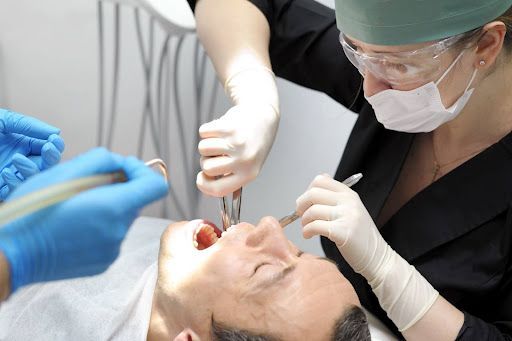Why We Recommend Fluoride
November 20, 2013
This week we will start a series about the use of fluoride. We will cover the risks and benefits of fluoride use as well as application methods. Next week we will explore different types of at-home fluoride and the following week we will discuss adjuncts to fluoride.
Benefits of Fluoride
Fluoride is an anion that helps remineralization in tooth enamel. Fluoride that enters our system through our diet can help strengthen our teeth before they erupt. As we age, the fluoride we consume becomes part of our saliva helping with remineralization.
Why we need it
As the bacteria in your mouth metabolize sugar, they produce lactic acid. This acid promotes erosion of tooth enamel which leads to greater penetration by caries causing bacteria. Tooth enamel that is remineralized using fluoride has a slightly different structure that makes it stronger and less susceptible to acid erosion.
Fluoride in our water supply
Fluoride was first added to a water supply in 1945 in Grand Rapids, MI. Since then many more communities have followed suit. Fluoride is naturally occurring in some water supplies, but not to the levels needed to provide optimal benefit to protect against tooth decay. The ADA states “Studies conducted throughout the past 65 years have consistently shown that the fluoridation of community water supplies is safe and effective in preventing dental decay in both children and adults.” As dental caries is the most wide spread disease affecting 60-90% of school children worldwide and nearly 100% of adults (source), adding fluoride to the water supply is one of the most effective ways to passively prevent against tooth decay. Adding fluoride to the water supply reduces instances of tooth decay by 20 to 40% (source).
Risks associated with Fluoride
The risks of fluoride are minimal when compared to the rewards. Frequent ingestion of fluoride during tooth development (up to age 8) can cause dental fluorosis. After tooth development is complete, fluorosis can no longer occur. Dental fluorosis most commonly presents as white spot or streaks in the adult teeth. More severe fluorosis may result in pitting or brown spots, though this is not common. The CDC recommends monitoring children’s use of fluoridated toothpastes to ensure that the toothpaste is spit out. The ADA recommends not using fluoride mouth rinses until the child is 6 years old and their swallowing reflex is fully developed (source).
Fluorosis can often be corrected using several different techniques including micro abrasion, composite restoration, or veneers.
Fluoride treatments at our office
Our Evanston dentists, James and Robert Stephens, recommend fluoride treatments twice a year for children and once a year for adults. In office fluoride treatments can be in the form of foam fluoride placed in trays, or fluoride varnish painted on your teeth. At Stephens Dentistry we choose to use the fluoride varnish for many reasons. Fluoride varnish has a higher concentration of fluoride and is applied directly to your teeth, allowing the fluoride to be available as needed to remineralize your teeth. The varnish is sticky, so the fluoride stays and can’t be rinsed off, unlike the foam fluoride. This also means that there is less chance for the fluoride to be ingested and contribute to fluorosis.
The post Why We Recommend Fluoride appeared first on Stephens Dentistry.







